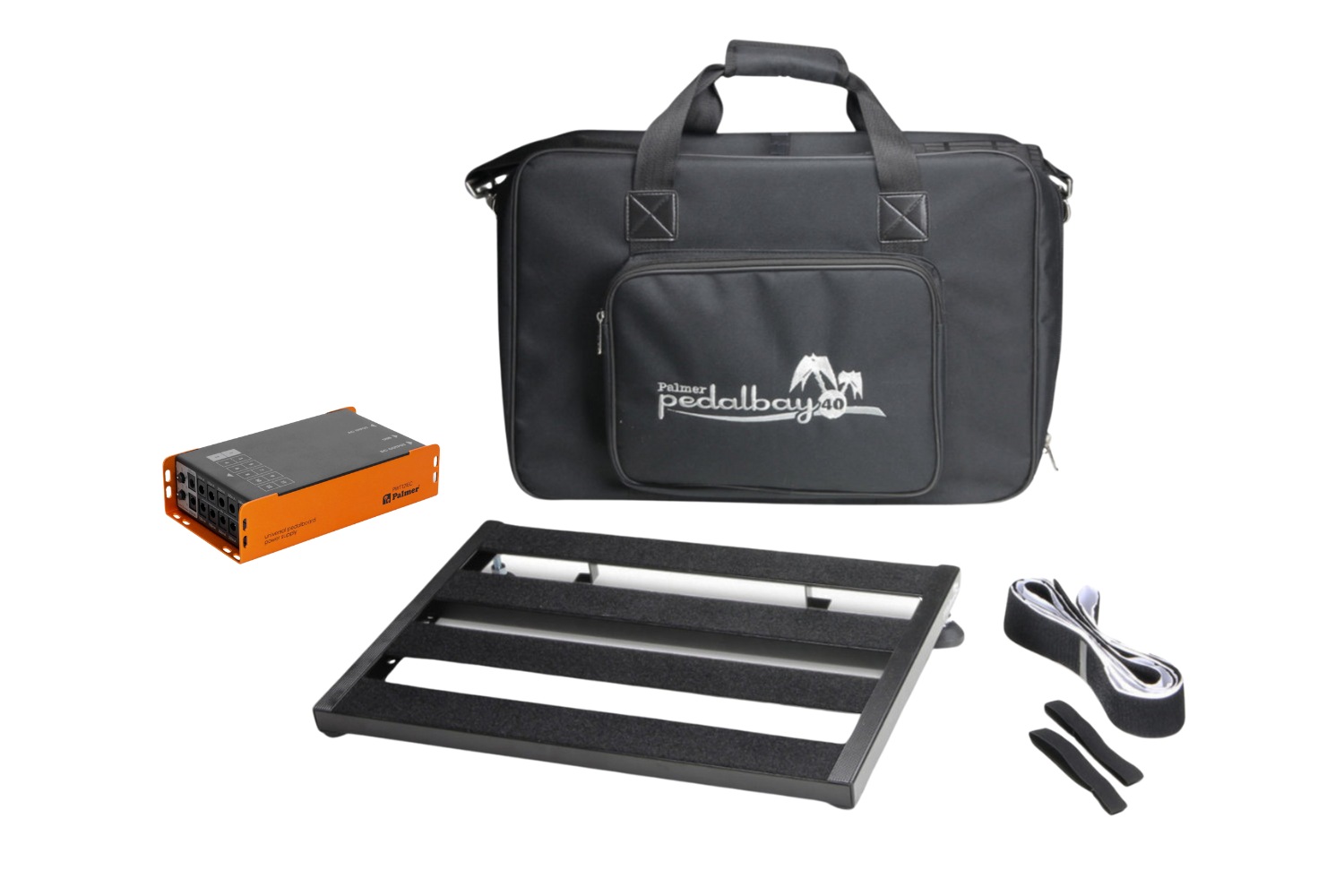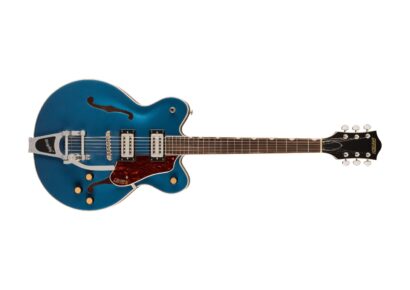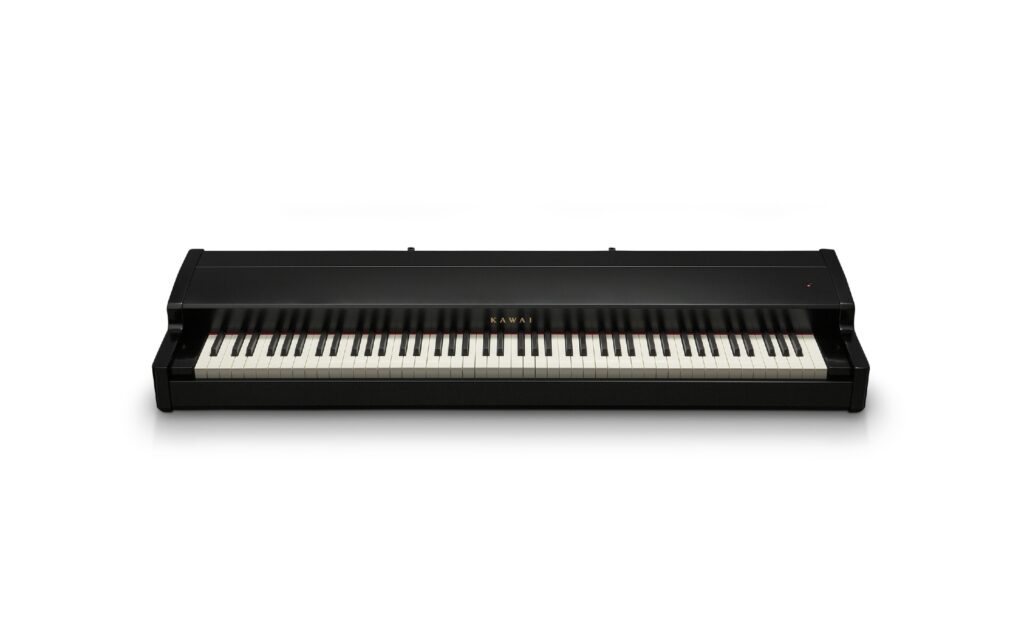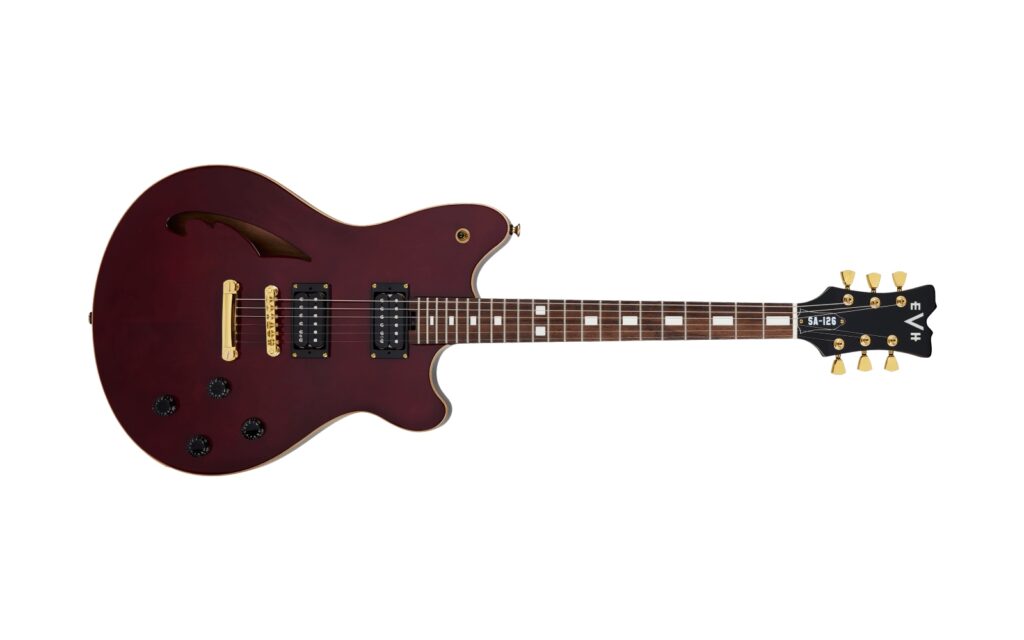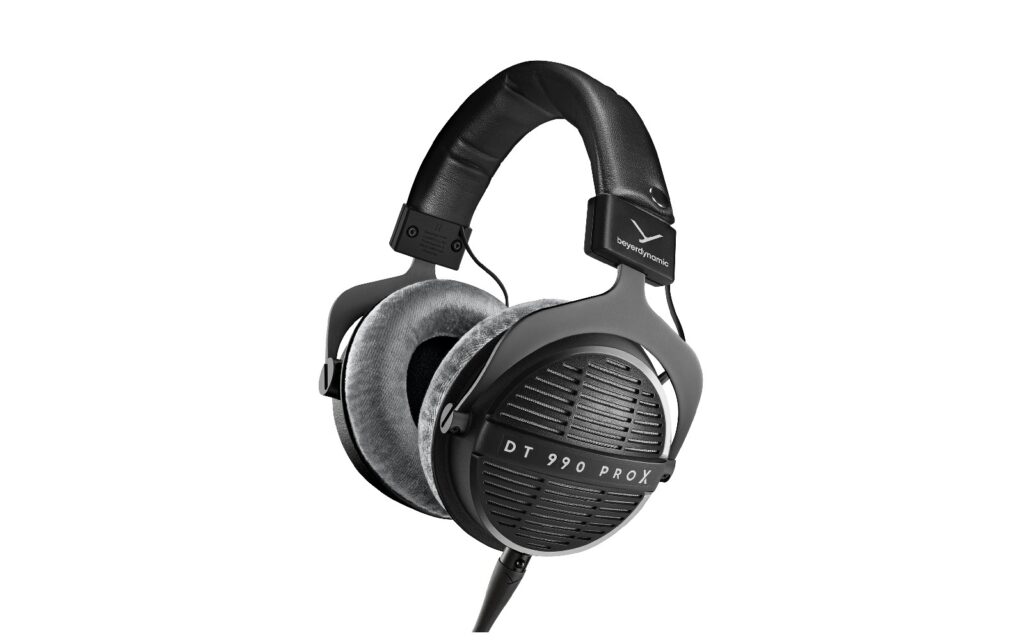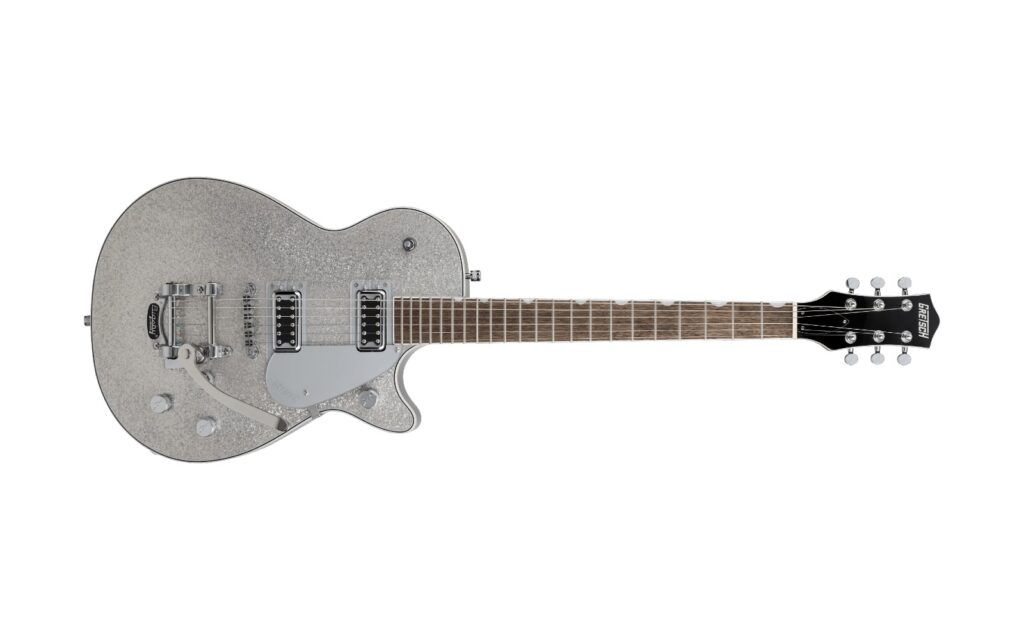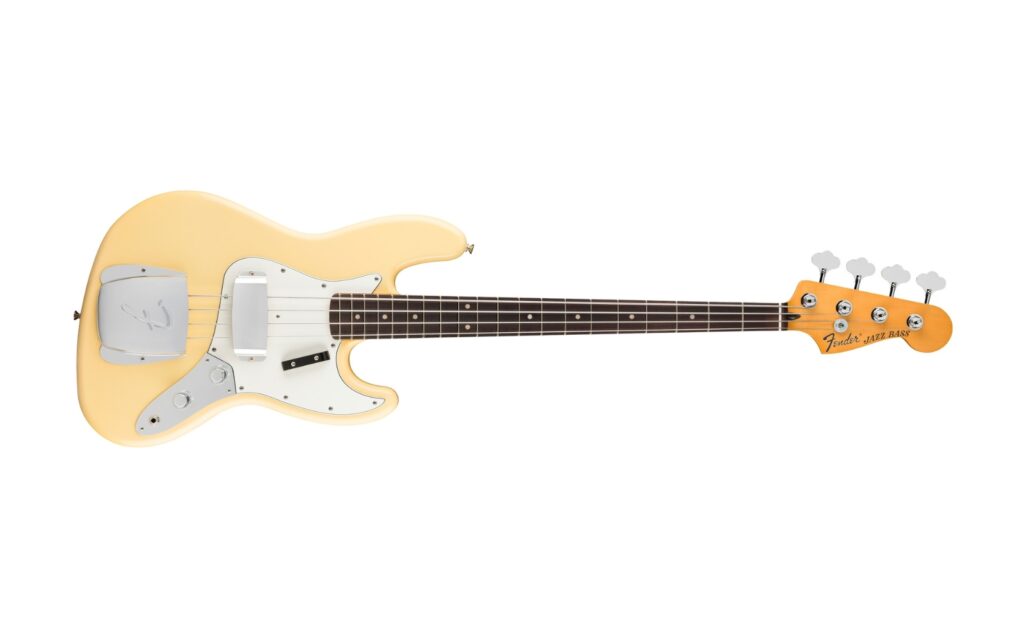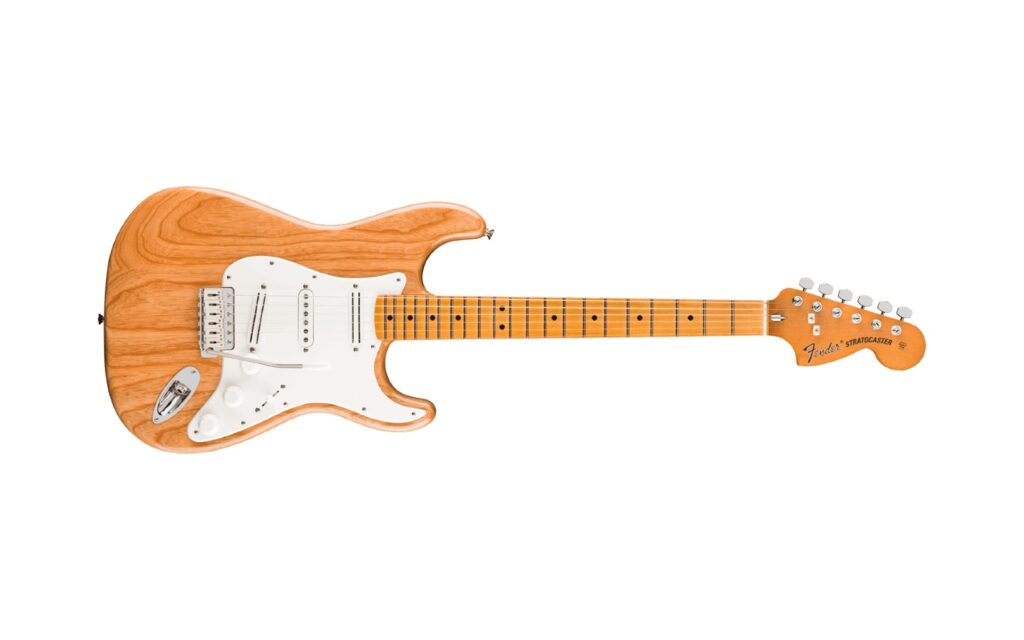Palmer Pedalbay 40 & Palmer PWT 12 IEC | Link Audio | RRP: Pedalbay 40 $149 and PWT 12 IEC $379
Palmer are a company building utility products with a few extra bells and whistles, giving them an edge over the competition and optimising your workflow. From power to routing, studios monitors to switches and even pedalboards, they’re here to organise your studio or stage.
When you finally decide you’ve got enough overdrive pedals, even if it’s only for a few weeks, it’s nice to be able to organise your effects on a board that maximizes your workflow and minimises the floorspace. It goes without saying but having your effects pedals already rigged on a board, with a dedicated power supply, ready to plug and play, makes your setup process a whole lot easier. Be it for just noodling some ideas at home, jumping into the rehearsal rooms, or setting up on stage, having your signal chain all sorted so you just need to connect guitar and amp at opposing ends makes for a very smooth process. And with the Palmer Pedalbay 40, a modest selection of pedals can be ready to rock at just about a moment’s notice.
For something seemingly so simple, it is really amazing to have seen the design developments in pedal boards over the past 15 or 20 years. Gone are the days of the flat bed road case with Velcro on one side and not a lot more on offer. It’s a different story these days. And the Palmer Pedalbay 40 shows just how some clever innovations can really change your approach to your pedal setup.
Read more gear reviews here.
The Palmer Pedalbay 40 takes the now more common approach with an aluminium rack design that offers excellent strength and very little weight. After all, your pedals weigh enough, along with all the other gear you have to lug about, so you don’t want the board to be too hefty, but it still needs to be tough enough to get trodden on night after night. They’re not called stomp boxes for nothing. The four rack crossbars come preloaded with the fluffy side of a Velcro tape set, the hook side in included for affixing to the underside of your pedals. With four crossbars, it allows for two rows of pedals to be set up. To give you an idea of the available real estate, you’ll squeeze six standard MXR pedals across each row, if you’re using slim patch cables. You can even stagger a few extras on the top rail, if you mount them sideways when you’re getting really desperate for another effect or two. This is made possible by the two adjustable centre cross bars, which can be shifted to several positions by accessing the locking nuts on the underside. By doing so, you can space them out, so the two rows of pedals share the middle crossbar, leaving the top one completely free for those last few pedals desperate to get some real estate on the board.

It’s not just the crossbars that are adjustable. The sturdy rubber shoed feet at the rear of the board can also be set to change the rear height, and as such, the angle with which the Palmer Pedalbay 40 sits at. This is really handy for guitarists who sit at a lot of gigs, or in rehearsals, when an angled board allows for better visuals of the pedals, and easier access to the buttons with your feet. It also allows for different sized power supplies to be squeezed in underneath the Pedalbay 40. There are four hook bars on the underside that, along with the aid of two elasticised bands, allow you to simply strap in a power supply neatly out of sight, with easy access to the pedals from between the crossbars. Because it is not a fixed, bolt-in style of mount, you can get away with using a wide range of power supplies, as just about any size will fit in between the hook bars. That said, a power supply unit like the Palmer PWT 12 IEC is an ideal solution.
The PWT 12 IEC power supply offers 12 separate, individually isolated power sources with a range of voltage and current options. It’s a really well thought out unit, in that it takes into account the needs of most pedal arrays used today. No two pedals are quite the same, nor are their power requirements. So, with the ten 9-volt outputs, you get a selection of current draw capabilities. Four outputs offering 100mA, four offering a solid 250mA and two offering a hefty 500mA current draw, ideal for digital delays and reverbs. Then there are two variable voltage outputs, offering a 250mA current draw, with a voltage range from 6-18 volts. There is also a 2A DC output, although not isolated, but capable of running additional power supply units. On top of that, you’ll find a USB-A and USB-C output for even more connectivity.
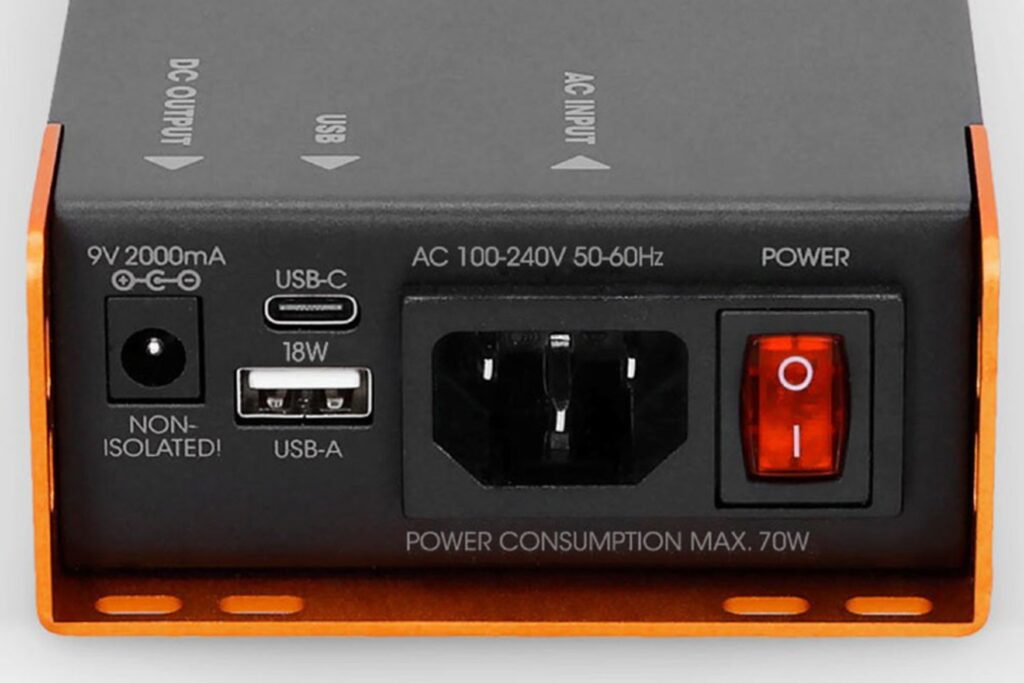
Bets of all, the input stage on the PWT 12 IEC, as the name suggests, is connected via an IEC cable. So, you don’t have to worry about annoying little wall warts, with delicate cables running across the stage. Just jump in a solid IEC cable and run it on an extension cord if needed and you’re ready to go. You get a whole host of DC cables, ranging from 30cm to 90cm, so you have enough length to access any corner on the Pedalbay 40 when it’s fully loaded, even when you have awkward power connections on some pedals. These can be carefully worked long the underside and fed up between the pedals where need. A few cable ties, or some patches of the Velcro from the Pedalbay 40 and you’ll be able to keep these cords all nice and neat.
With the Palmer Pedalbay 40 and the PWT 12 IEC you have the capability to organise your pedals into a signal chain that works best for your sound, and leave it set up ready to rock. There’s no need to unplug everything after a session, so your cables, and connections are going to last far longer, and it all packs into the handy carry bag so you’re in and out in a flash. If you need a pedal board refresh, check one out today at your local guitar store. With this new level of pedal organisation, you’ll not know yourself.
For local Palmer enquiries visit Link Audio.
